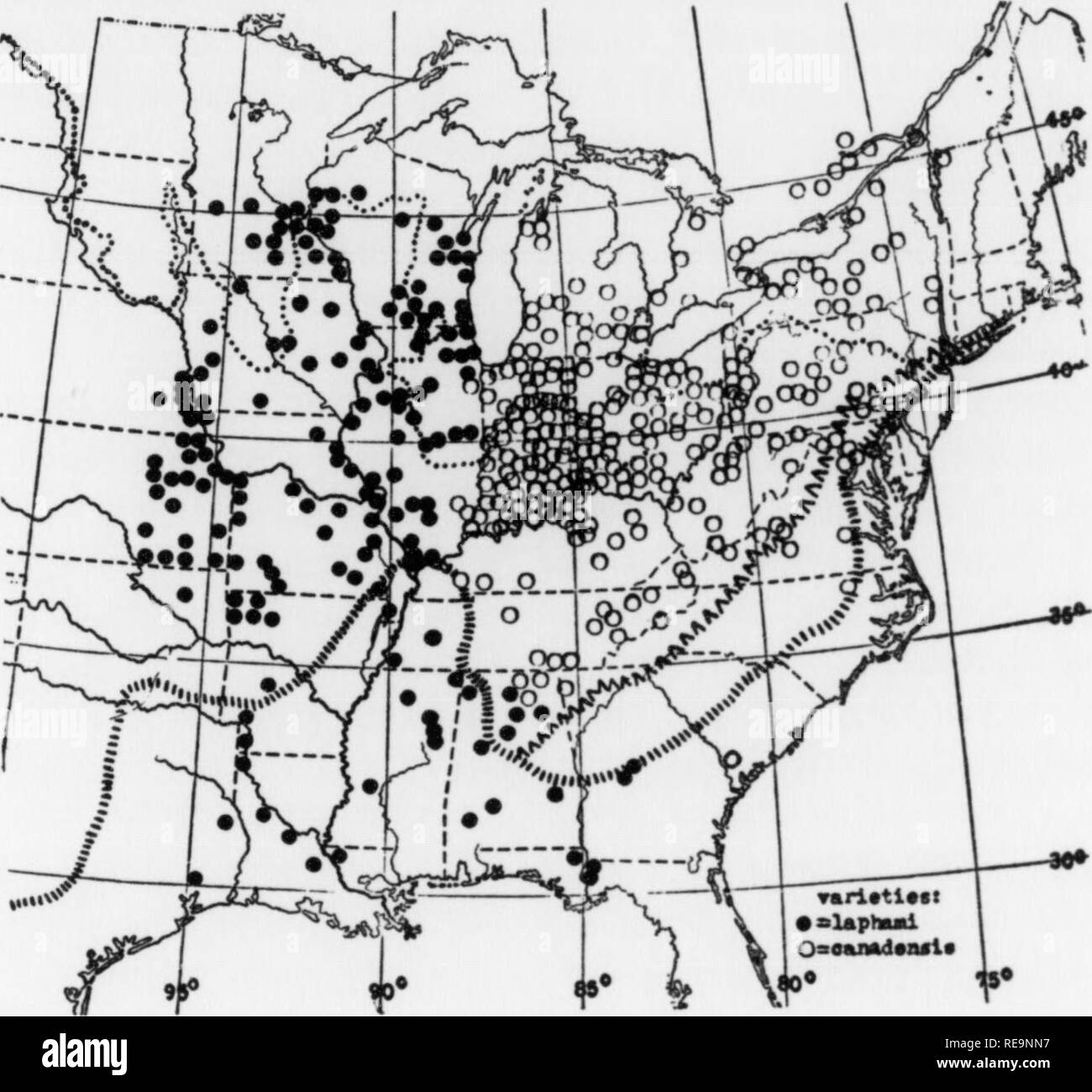. Contributions from the Botanical Laboratory, vol. 8. Botany; Botany. 26 PROCEEDINGS OP THE PHILADELPHIA BOTANICAL CLUB 27 When explorations came to be made in the Mississippi basin, the Phlox divaricata occurring there was found to differ some- what from that farther east, and attempts were made to recog- nize this by special nomenclature. In enumerating plants observed in Arkansas territory, NuttalP included a ''P. glom- erata," with a star to indicate that he regarded it as a new species, but as he furnished no description the name lacks validity. A specimen from his original collecti

Image details
Contributor:
The Book Worm / Alamy Stock PhotoImage ID:
RE9NN7File size:
7.1 MB (318.5 KB Compressed download)Releases:
Model - no | Property - noDo I need a release?Dimensions:
1638 x 1525 px | 27.7 x 25.8 cm | 10.9 x 10.2 inches | 150dpiMore information:
This image is a public domain image, which means either that copyright has expired in the image or the copyright holder has waived their copyright. Alamy charges you a fee for access to the high resolution copy of the image.
This image could have imperfections as it’s either historical or reportage.
. Contributions from the Botanical Laboratory, vol. 8. Botany; Botany. 26 PROCEEDINGS OP THE PHILADELPHIA BOTANICAL CLUB 27 When explorations came to be made in the Mississippi basin, the Phlox divaricata occurring there was found to differ some- what from that farther east, and attempts were made to recog- nize this by special nomenclature. In enumerating plants observed in Arkansas territory, NuttalP included a ''P. glom- erata, " with a star to indicate that he regarded it as a new species, but as he furnished no description the name lacks validity. A specimen from his original collection, preserved in the Gray Herbarium, is an immature individual of the com- mon representative of P. divaricata in that region, which is characterized by having entire corolla-lobes. The same thing was collected by Lapham in Wisconsin, and named by Wood^ P. divaricata P ? laphami, with the description ''Lvs. ovate; pet. obtuse, entire. . Intermediate between P. divaricata and P. glaherrima, and may prove distinct from both.'' Gray^ modified Wood's designation to variety laphamii; and many years later, Clute* held the difference in corolla-lobe outline to justify the recognition of two distinct species, applying to the western one the name P. laphamii. To what extent these different interpretations correspond to the existing relation- ships will be considered after the variations shown by P. di- varicata have been described. Whitish variants occasionally appear in all large colonies of the Blue Phlox, and the names **P. divaricata alba, " *'P. canadensis alba, '' and even *'P. laphami alba" have long been in use for such material by horticulturists, although none of these combinations appear to have been validated by formal publication. In 1920 FarwelP proposed P. d. forma alhi- flora for a plant from Michigan, while a few years later House® applied the same term to a New York occurrence. FarwelF subsequently furnished data to show that a pallid rather than a complete al